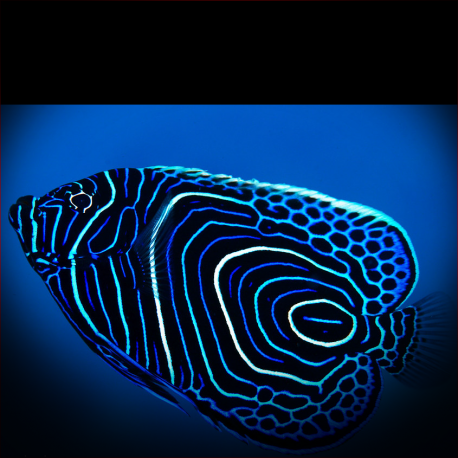More info
Datasheet
| Minimum Tank Size | 800 litres / 211.34 US gallons |
| Maximum Size | 40.0cm / 15.75inches |
| Reef Compatible | Not reef safe |
| Temperament | Might be aggressive towards other species |
| Temperature | 22.2°C / 71.96°F - 25.6°C / 78.08°F |
| Specific Gravity | 1.020-1.025 |
| Carbonate Hardness | 8-12 |
| pH | 8.1-8.4 |
General Description
The Emperor Angelfish, scientifically known as Pomacanthus imperator, is a stunning member of the Pomacanthus genus. These fish are renowned for their vibrant colors and intricate patterns. They predominantly inhabit sponges but also feed on soft corals, tunicates, and macroalgae in their natural habitat. Notably, there is a significant contrast in appearance between juveniles and adults, with adults showcasing remarkable growth potential when adequately nourished.
Aquarium Suitability
The Emperor Angelfish is regarded as suitable for the aquarium trade but requires diligent care. They demand a high level of water quality, particularly emphasizing proper oxygenation. While they are not considered reef-safe due to their diet, selective coral choices can allow for cohabitation in a coral aquarium.
Demands, Care, and Hardiness
This species thrives in environments with meticulous attention to water quality, especially in terms of oxygen levels. Emperor Angelfish are known for their moderate hardiness, although they may exhibit aggression, particularly towards similar fish species or in cramped living spaces. They acclimatize best as juveniles and benefit from frequent feeding and varied diets to ensure optimal health.
Reef Suitability
Emperor Angelfish are not considered reef-compatible due to their tendency to consume soft corals and large-polyp stony corals (LPS). However, by strategically selecting coral species, it is possible to establish a mixed coral aquarium with Emperor Angelfish residing harmoniously.
Aquarium Setup
When setting up an aquarium for Emperor Angelfish, it is crucial to provide ample space for swimming as these fish enjoy swimming freely. Incorporating live rocks with sufficient hiding places is essential to create a comfortable environment for the fish. Maintaining a well-established aquarium with algae-rich surfaces aids in their grazing habits and overall well-being.
Behaviour
These fish can exhibit varying behaviors, including shyness upon initial introduction to a new aquarium and potential aggression towards other fish species if space is limited. Emperor Angelfish are known to produce grunting sounds when feeling threatened and have specific hierarchy dynamics in pair settings.
Feeding and Diet
Emperor Angelfish require a diverse diet that includes algae-based foods like nori seaweed and spirulina, larger crustaceans, sponges, and other invertebrates. Establishing a feeding routine several times a day is crucial, especially during the introduction phase, to support their nutritional needs.
Dimorphism and Captive Reproduction
Emperor Angelfish can undergo gender changes from female to male. They may form pairs in captivity and exhibit complex sexual dynamics. Reproduction in captivity, although challenging, has been achieved with proper care and conducive breeding conditions.
Habitat and Distribution
These impressive fish are found in the Indo-Pacific region, ranging from the Red Sea and East Africa to regions encompassing the Hawaiian Islands and southern Japan. With their captivating presence and unique behaviors, Emperor Angelfish contribute to the biodiversity and beauty of the marine ecosystems they inhabit.

